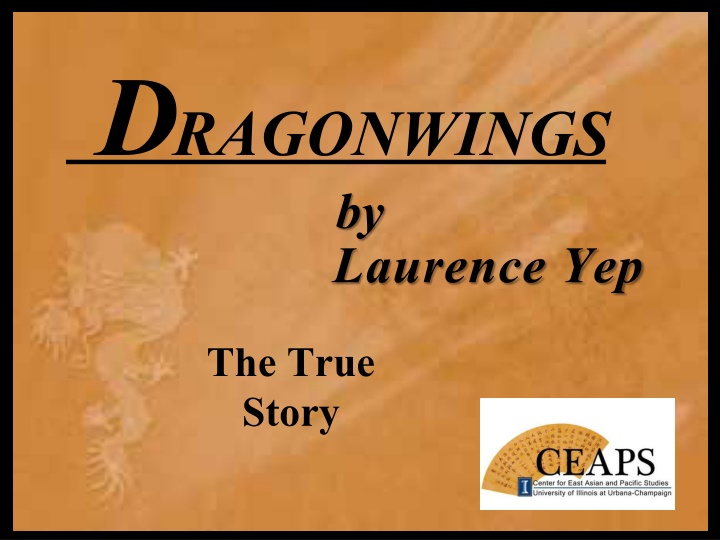
The True Story Behind Ragonwings: Fung Joe Guey's Aviation Journey
Explore the remarkable journey of Fung Joe Guey, an aviation pioneer who immigrated to the U.S. from China at a young age. Discover how he taught himself engineering, achieved early flight successes in California, and later returned to China to advance military aviation. Learn about his tragic end while making an exhibition flight in 1912. This narrative sheds light on the lesser-known but significant contributions of Fung Joe Guey to the history of aviation.
Download Presentation

Please find below an Image/Link to download the presentation.
The content on the website is provided AS IS for your information and personal use only. It may not be sold, licensed, or shared on other websites without obtaining consent from the author. If you encounter any issues during the download, it is possible that the publisher has removed the file from their server.
You are allowed to download the files provided on this website for personal or commercial use, subject to the condition that they are used lawfully. All files are the property of their respective owners.
The content on the website is provided AS IS for your information and personal use only. It may not be sold, licensed, or shared on other websites without obtaining consent from the author.
E N D
Presentation Transcript
RAGONWINGS by D Laurence Yep The True Story
Laurence Yep He was born in San Francisco in 1948 and still lives in California. Dragonwings is part of his Golden Mountain Chronicles series. His other series include Chinatown Mysteries and the Dragon of the Lost Sea fantasies. He adapted Dragonwings into a stage play performed in New York.
But theres a story Behind the story
Fung Joe Guey He was also known as Feng Ru or Fung Yue. Born in the Guangdong Province of China in 1883, he immigrated to the U.S. when he was twelve. He ended up in Oakland, California. He taught himself mechanical and electrical engineering.
The First Success From The Oakland Tribune, September 23rd, 1909
The First Success It was September 21st (or September 22nd ) 1909 at approximately 6 p.m. He flew in the hills of Piedmont, California, a small town surrounded by Oakland. The flight was at a height of around ten feet. This bust of Fung was first at the site of his workshop, which is now part of Laney College. After 20 minutes, a broken propeller bolt caused him to crash. Fung suffered minor injuries mostly bruises in the accident.
The Second Plane This new plane was made out of steel pipes and silk fabric. It first flew successfully in January of 1910 for about four minutes. He made several other flights in 1910, attracting a lot of attention.
Return to China Sun Yat-sen requested that Fung return to China, possibly to develop military uses for the plane. Fung arrived on March 21st, 1911, bringing a plane or two with him. Fung also wanted to bring electricity and other technology to his homeland. This is a replica of Fung s first plane built and flown in China in 1912. It s housed in a museum in Nanjing. Sun Yat-sen made him the first head of the air force.
Tragic Death He died on August 25th or 26th, 1912. He was making an exhibition flight in front of around 1,000 spectators. While attempting to ascend sharply, his plane likely stalled out. He crashed into a bamboo grove, causing bamboo to pierce his body. Fung s monument at the Mausoleum of the 72 HuanghuagangMartyrs His memorial stone reads: Pioneer of Chinese Aviation.
RAGONWINGS D Brought to you by:
